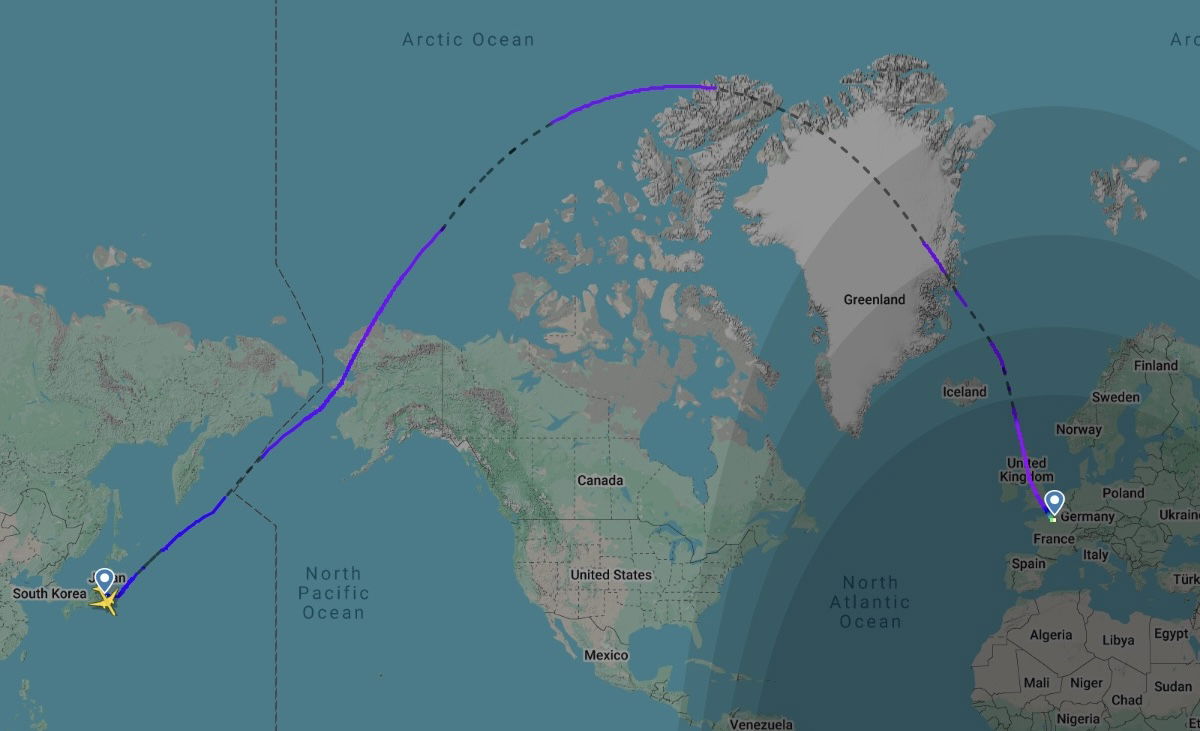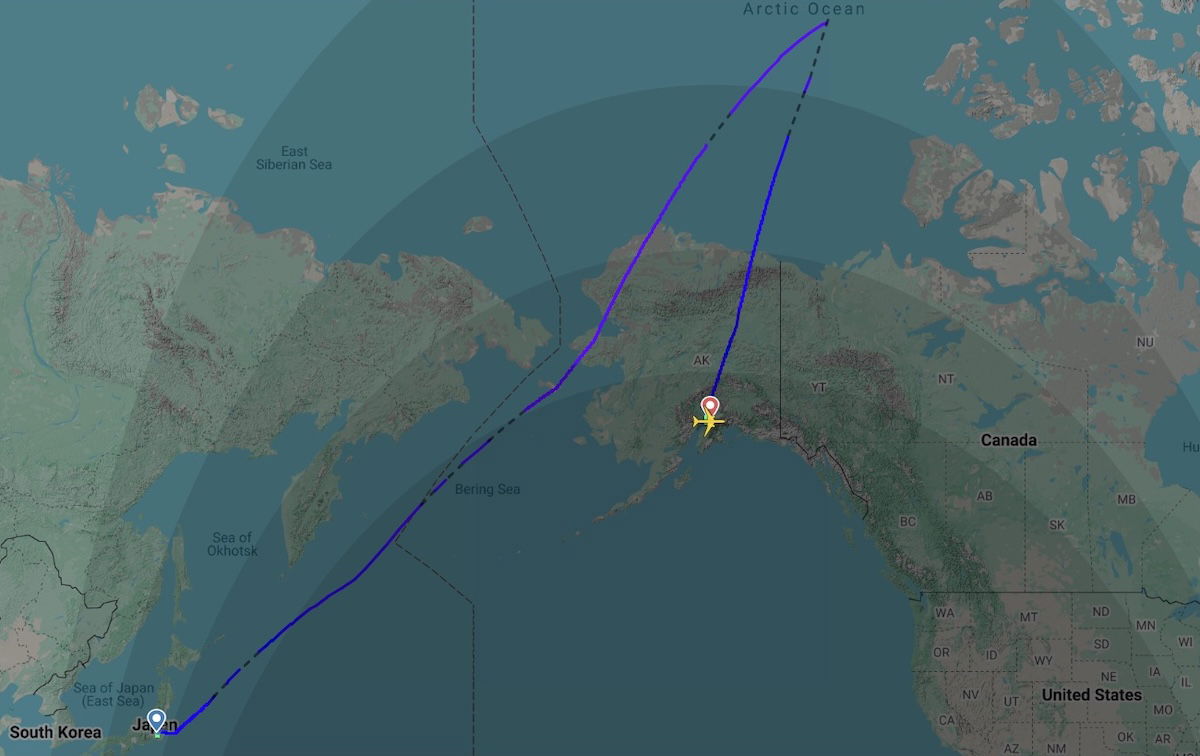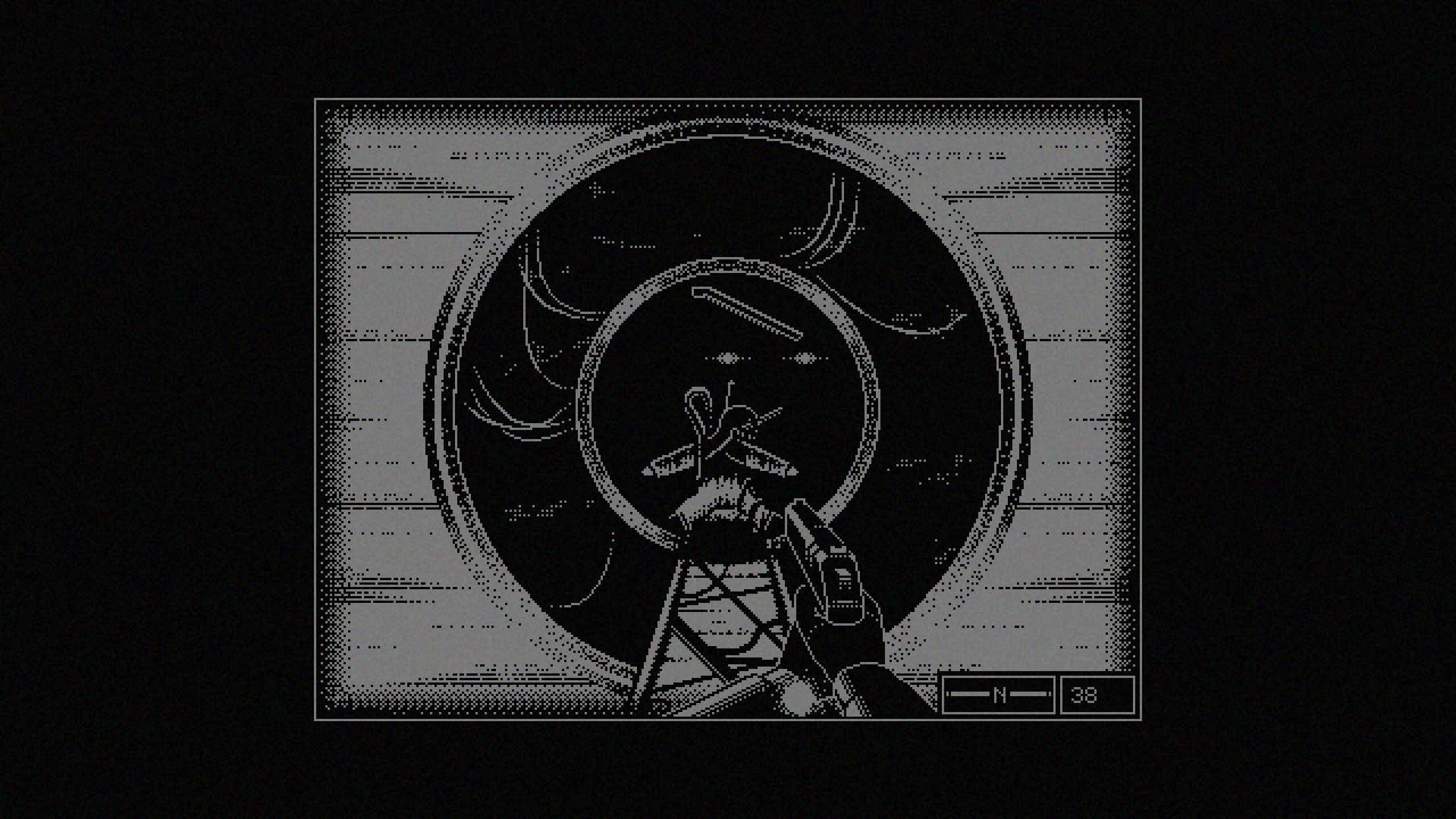Air France 777 Flying From Tokyo To Paris Diverts To… Anchorage?!?
An Air France jet flying from Japan to France diverted to the United States. I wouldn’t want to be in charge of the logistics here.

An Air France jet flying from Japan to France diverted to the United States. I wouldn’t want to be in charge of the logistics here.
Air France 777 diverts to Anchorage in the middle of the night
Air France operates a daily flight between Paris (CDG) and Tokyo (HND) with a Boeing 777-300ER. Generally speaking, this flight operates eastbound in both directions, essentially flying across the globe. Why?
Of course you’d expect the Paris to Tokyo flight to operate eastbound, since that’s the shortest distance. But why does the flight from Tokyo to Paris also operate eastbound? Well, due to the closure of Russian airspace and the detours that are required, it’s more efficient to just fly eastbound and cover more miles with a strong tailwind most of the way, rather than flying westbound with a strong headwind.
So below is what the typical routing looks like from Tokyo to Paris.
Today (Wednesday, April 9, 2025), this flight had a bit of an issue, and the logistics will surely be complicated. This flight is being operated by a 19-year-old jet with the registration code F-GSQM. Air France flight 187 departed Tokyo on-time, taking off at 9:01AM. It was supposed to operate the roughly 14-hour journey, though that’s not how things worked out.
The plane started flying northeast, traveling over the Bering Sea, then Alaska, and then over the Arctic Ocean. Unfortunately just under 7.5 hours after takeoff, the aircraft changed its course in order to divert. I’m not yet sure why the plane diverted, though am working on figuring that out — presumably it was either a medical emergency or a mechanical issue.
As you’d expect, diversion points in this part of the world are limited, so the plane started flying south, with the decision being made to divert to Anchorage (ANC). The plane touched down there at 2AM local time, almost exactly 10 hours after it departed Tokyo.
These logistics are going to be complicated
At first I wondered if it was just a quick medical diversion and a passenger would be dropped off and the flight would continue, but that doesn’t appear to be the case.
The plane has now been on the ground in Anchorage for well over three hours, so I think it’s safe to assume that the flight won’t be continuing its journey today, and that the crew has timed out. I don’t know what Air France’s pilot contract says, but it’s entirely possible that a medical diversion on the carrier’s longest flight could be enough to cancel the rest of the journey.
Either way, this will be challenging:
- Air France of course has no staff in Anchorage, as the airline doesn’t fly there, so it’ll be hard to provide proper support to passengers
- Presumably many passengers traveling between Japan and the European Union aren’t authorized to enter the United States, so hopefully they can find a way to allow passengers to stay in hotels, rather than in the terminal somewhere
I’ll keep an eye on what happens here, as I’m curious how this diversion evolves. If this was a medical diversion, I of course hope that the person impacted is okay. That being said, as an aviation geek, I must say that this has to be one of the cooler diversions out there.
Imagine you’re on the flight, and you text your family in France “see in you in 14 hours.” Then 10 hours later, you’re like “hi from Anchorage.”
In fairness, we’ve seen diversions to much more remote destinations, like to airports in rural Russia, the Canadian Arctic, etc.
Bottom line
An Air France Boeing 777 flying from Tokyo to Paris has diverted to Anchorage, and has now been on the ground for a few hours. The closure of Russian airspace means that this flight operates eastbound, as you wouldn’t ordinarily expect a diversion to the United States when flying between Japan and France.
What do you make of this Air France 777 diversion?









































































































































































































































































